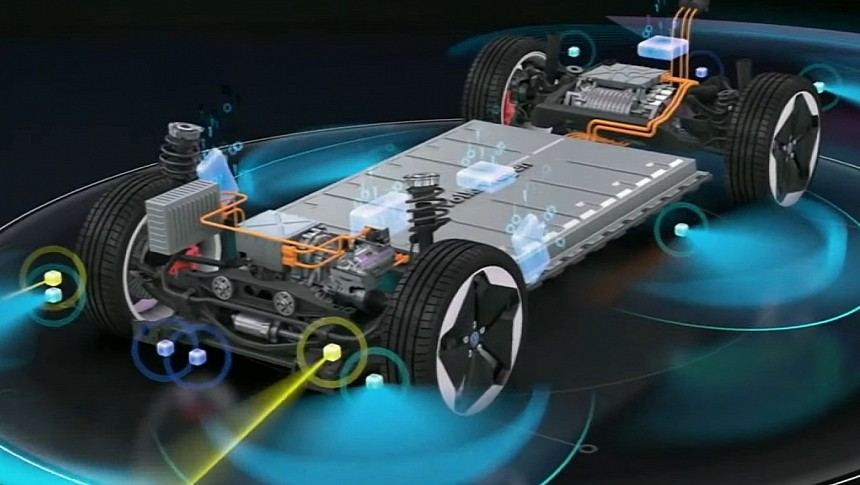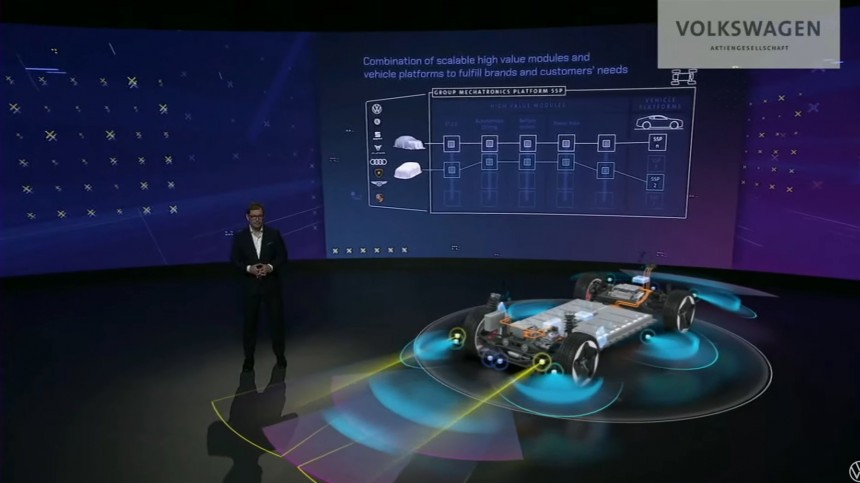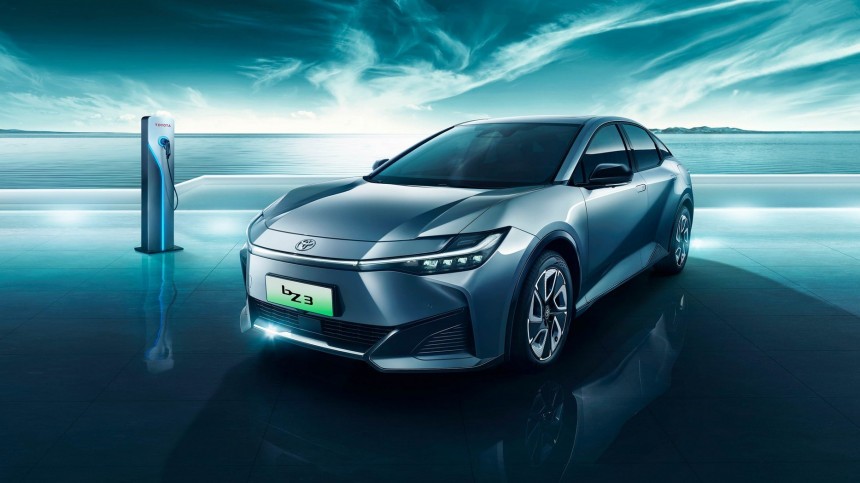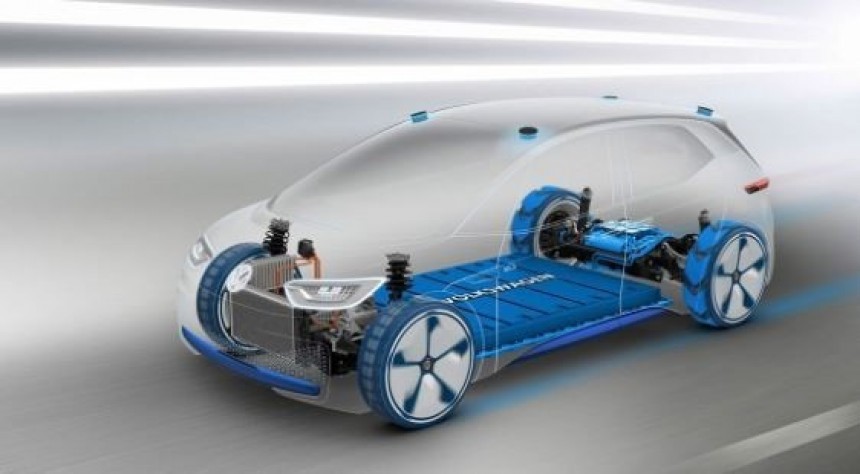Volkswagen started its EV push by suggesting that its first dedicated battery electric vehicle (BEV) platform would be sold to smaller companies willing to make this sort of car. In a way, the German automaker expected to repeat what happened with the Beetle, which became the basis for vehicles such as the Meyer Manx, Porsche 356 replicas, Puma GT (not that one sold by Ford), Gurgel XEF, and several others. It did not work as planned: Volkswagen is the one purchasing electric platforms to build its cars in China.
I had already talked about that when we had rumors that the company was discussing an agreement to use a SAIC electric platform for Audi. They were later confirmed, which showed how desperate the Volkswagen Group is to become more competitive in the Chinese market. It was just the beginning: the German carmaker later announced investments in XPeng to use its Edward (E/E) platform. More recently, there are rumors that the Jetta brand is after one of Leap Motors' architectures. What a change for a company that was so confident it would have the electric equivalent of the Beetle, right?
As Augustin Friedel pointed out on LinkedIn, this is more than a curious reversal of expectations: it is a paradigm shift. It is not just a case of Volkswagen purchasing platforms instead of selling them. This is probably the first time Chinese companies are providing car architectures for a Western carmaker and not the other way around.
Not long ago, any automaker that wished to set foot in the Chinese market had to create a joint venture with a local company. Tesla was the first not to be forced to do that. That gave these Chinese automakers a chance to make their own vehicles with foreign and more mature platforms. With the BEV shift, the Chinese government decided to stimulate these vehicles' sales. Being something nobody knew how to build right allowed local carmakers to develop their own solutions.
That went so well that BYD beat Volkswagen in the world's largest car market in the first half of 2023. Considering the Volkswagen Group dominated the Chinese sales charts until very recently, this was another major paradigm shift. In a way, only something that powerful could push the German company to swallow its engineering pride and use a Chinese platform – something people would never have imagined just a few months ago.
Friedel reminds us that this is not the first situation in which a Western automaker "borrows" a Chinese electric platform to make its cars. BMW already did that for the next generation of the Mini hatchback. Toyota also used a BYD platform to create the bZ3. In BMW's case, the deal was structured in other terms.
The German company established a joint venture with Great Wall Motors (GWM) called "Spotlight Automotive Limited." The new electric Mini appeared undisguised in December 2021 and should have already arrived. Expect its official presentation for the Munich Auto Show in September.
Curiously, only the electric version may genuinely be from a new generation: the car powered by internal combustion engines (ICE) will use the same platform as the current one. That decision would make perfect sense for any company aiming to go fully electric: why invest in a new platform for ICE vehicles, right? Yet, BMW already said it will not stick to a single solution for a carbon-neutral future. Theoretically, a new ICE architecture could help it present better plug-in hybrids, for example.
Two major aspects contribute to this paradigm shift: time and money. While Western companies are investing in developing new BEV platforms, Chinese automakers already have several architectures for a wide variety of market niches. This is what explains the Volkswagen Group going after three different Chinese competitors to purchase their platforms: SAIC for high-end vehicles, XPeng for midsize cars, and probably Leap Motors for entry-level BEVs. The sooner the company can sell these vehicles in China, the better. The less money it has to invest to recover its market lead in China… You've got the point.
Volkswagen intended to use the MEB for most of its BEVs, but it soon disclosed it was unhappy with the time these cars take to manufacture: they needed to be more competitive. Software issues also created a rejection that the German carmaker is trying to beat with lower prices. That's the only way to make cars on this platform more attractive without major changes. The bad news is that the MEB is yet to turn a profit. In fact, it may die before it achieves that goal because of the Scalable Systems Platform (SSP). It is supposed to retire the MEB and the PPE – which underpins the Audi e-tron GT and the Porsche Taycan.
Although this platform-purchasing deal is obviously temporary, it shows how fast things can go upside down in the automotive industry – even if the whole thing has been developing for years. Chinese carmakers evolved from companies that copied famous designs and presented lousy quality to engineering partners – and life-saving boats – for behemoths such as Volkswagen and Toyota. We may be close to the time when they will be recognized as members of the same league.
As Augustin Friedel pointed out on LinkedIn, this is more than a curious reversal of expectations: it is a paradigm shift. It is not just a case of Volkswagen purchasing platforms instead of selling them. This is probably the first time Chinese companies are providing car architectures for a Western carmaker and not the other way around.
Not long ago, any automaker that wished to set foot in the Chinese market had to create a joint venture with a local company. Tesla was the first not to be forced to do that. That gave these Chinese automakers a chance to make their own vehicles with foreign and more mature platforms. With the BEV shift, the Chinese government decided to stimulate these vehicles' sales. Being something nobody knew how to build right allowed local carmakers to develop their own solutions.
Friedel reminds us that this is not the first situation in which a Western automaker "borrows" a Chinese electric platform to make its cars. BMW already did that for the next generation of the Mini hatchback. Toyota also used a BYD platform to create the bZ3. In BMW's case, the deal was structured in other terms.
The German company established a joint venture with Great Wall Motors (GWM) called "Spotlight Automotive Limited." The new electric Mini appeared undisguised in December 2021 and should have already arrived. Expect its official presentation for the Munich Auto Show in September.
Two major aspects contribute to this paradigm shift: time and money. While Western companies are investing in developing new BEV platforms, Chinese automakers already have several architectures for a wide variety of market niches. This is what explains the Volkswagen Group going after three different Chinese competitors to purchase their platforms: SAIC for high-end vehicles, XPeng for midsize cars, and probably Leap Motors for entry-level BEVs. The sooner the company can sell these vehicles in China, the better. The less money it has to invest to recover its market lead in China… You've got the point.
Although this platform-purchasing deal is obviously temporary, it shows how fast things can go upside down in the automotive industry – even if the whole thing has been developing for years. Chinese carmakers evolved from companies that copied famous designs and presented lousy quality to engineering partners – and life-saving boats – for behemoths such as Volkswagen and Toyota. We may be close to the time when they will be recognized as members of the same league.






































